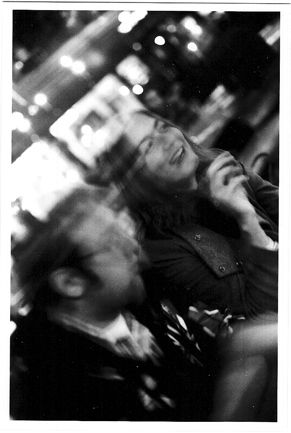Gowalla begets meaning; meaning begets beauty.

After a morning interviewing bright, nervous Linehan Scholar candidates, I found this amazing mid-century modern furniture near campus. When I find cool places like this, I always check in with Gowalla, to record for future reference. I haven’t used the app since my most recent update, and noticed this new “Highlight” feature today when I logged in:
This new interaction ties directly into Norman’s reflective emotional appeal. Interactions are inherently about people. People are inherently about stories and meaning. Gowalla is creating a framework for this human need, resulting in more beautiful interactions. Which is very interesting. Do the attachment of other people’s stories to a place automatically make it more attractive? I live in a 150-year old house. What if, via Gowalla check-ins, I were able to access trivial tidbits about life in this house from the original owners? How interesting would that be, and historically, how valuable? Very, I think. Technology exists in such a format now that we can essentially treat an entire city like a museum exhibit, our smart phones acting as information placards, narrators and data aggregators, providing a window on the past.
I’ll close with this on storytelling, from The Secrets of Good Storytelling: Why We Love a Good Yarn by Jeremy Hsu at the Scientific American:
Psychologists and neuroscientists have recently become fascinated by the human predilection for storytelling. Why does our brain seem to be wired to enjoy stories? And how do the emotional and cognitive effects of a narrative influence our beliefs and real-world decisions?
The answers to these questions seem to be rooted in our history as a
social animal. We tell stories about other people and for other people. Stories help us to keep tabs on what is happening in our communities. The safe, imaginary world of a story may be a kind of training ground, where we can practice interacting with others and learn the customs and rules of society. And stories have a unique power to persuade and motivate, because they appeal to our emotions and capacity for empathy.
and
But the best stories—those retold through generations and translated into other languages—do more than simply present a believable picture. These tales captivate their audience, whose emotions can be inextricably tied to those of the story’s characters. Such immersion is a state psychologists call “narrative transport.”
Researchers have only begun teasing out the relations among the variables that can initiate narrative transport. A 2004 study by psychologist Melanie C. Green, now at the University of North Carolina at Chapel Hill, showed that prior knowledge and life experience affected the immersive experience. Volunteers read a short story about a gay man attending his college fraternity’s reunion. Those who had friends or family members who were homosexual reported higher transportation, and they also perceived the story events, settings and characters to be more realistic. Transportation was also deeper for participants with past experiences in fraternities or sororities. “Familiarity helps, and a character to identify with helps,” Green explains.
